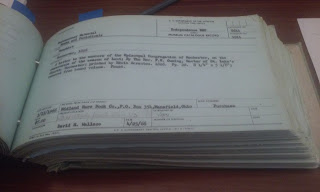My story with
the National Park Service (NPS) officially began with my participation in the
George Wright Fellowship at Independence National Historical Park (INDE) in
Philadelphia. At least, that was the official beginning. Even so,
I suppose you could trace my trail to the Park Service much further.
I’ve always loved history. Despite
my quick stint with wanting to become a doctor in my high school years, my
passion for understanding worlds so different than my own was a paramount
interest in my life. I was an anomaly among my classmates; while others were
lost in the ticking hands of the clock until history class was over, I thought
forty minutes weren’t nearly enough.
My house was a history classroom all
on its own. My parents, Portuguese immigrants, introduced me to new narratives
outside the ones I was being presented in school. Teenagers during the Revolution
of 1974 in Portugal, they told stories of a socialist regime, censorship, and
the democratic reforms that came in its aftermath. I had a personal connection
to these stories. But while most of my classmates’ histories were mirrored in our
assigned textbooks and displayed in local heritage sites, I struggled to see
and identify myself in courses that truncated Portuguese history after Prince
Henry the Navigator and Vasco Da Gama.
If I couldn’t see myself in it, I was determined to contribute and make myself
a part of it.
My decision to major in history in
college was my attempt to become an active participant in the historical
process. I didn’t just want to write about history, but I wanted to encourage
others to be as excited about history as I was. I volunteered at different
museums wherever I could to work with audiences. My journey to personally connect
with history has directly influenced my desire to help others develop
relationships with their past and the cultural sites around them. In many ways,
I see myself in the NPS mission.
When I began graduate school to
study Public History, I became immersed in the National Park Service. During my
first semester, I read the 2014 “Imperiled Promise” report, which introduced me
to a world I had previously left unexplored. After reading the Report, I wanted
to come involved with the NPS. That opportunity came around when I applied and
was accepted to the George Wright Fellowship at Independence. Myself, along
with seven other graduate students, designed an exhibit for New Hall Military
Museum, site of the first United States War Department. It was an incredible
opportunity to witness how history “is done” within the NPS. I later combined
my interest in international and NPS history when I wrote a paper that examined
the NPS’s Division of International Affairs in the 1950s and 1960s and its
various projects abroad.
A few months following the George
Wright Fellowship, I was invited back to Independence for a summer internship.
In January 2015, a fire erupted in the historic Second Bank of the United
States. While no damage occurred in the building, I was asked to participate in
the conservation project cleaning and restoring over 10,000 objects in the
Second Bank’s collection storage area.
The opportunity to assist in such a
vital project has been a learning experience for me. Without these resources,
we are endangering the public’s access to important artifacts that tell
multiple and intersecting stories. Working with the NPS in the conservation
effort has made me a contributor and participant in the park’s past. I’m so
grateful to be a part of it, and I want to invite others to do the same in my
future career as a public historian. The NPS makes strides to make the past
learning grounds for audiences, and I’m excited to collaborate with an
institution that takes learning about the past very seriously.
This is my story.



